British Army assault bridges
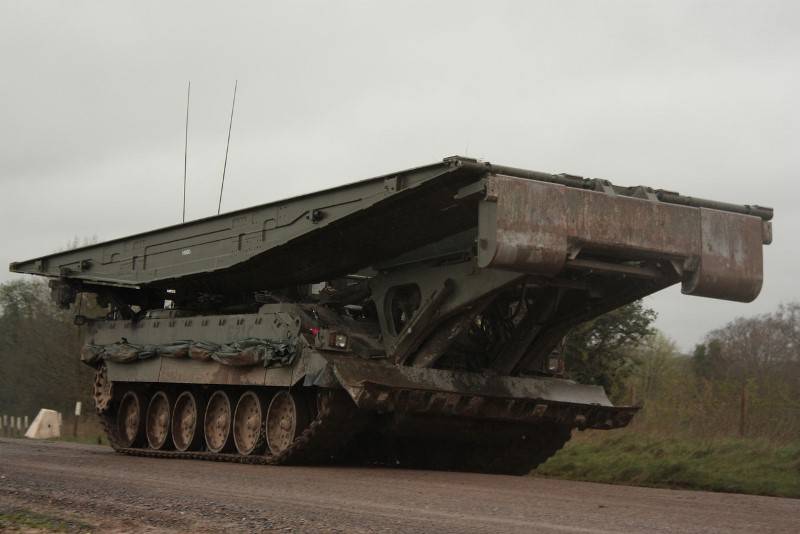
Part one
At the beginning of the twentieth century, when conducting hostilities with the use of armored vehicles, one of the main problems for the rapid advancement of this very equipment, including the first tanks, the complex landscape of the battlefield, formed by numerous shell craters, ditches and trenches, has become. To solve this problem, it was necessary to create new combat vehicles or special equipment. It was obvious that new technology with special equipment must necessarily be able to overcome the above obstacles. And already in 1916, British designers proposed a project of a vehicle, originally adapted for crossing ditches by tanks using an "assault bridge".
In modern English terminology, an "assault bridge" is a close support bridging. It is intended for the device to cross an obstacle in the zone of direct and indirect fire of the enemy.
It is important to note that in many conflicts, conventional bridge equipment was used and is being used under fire, but specialized assault bridge equipment appeared in response to the needs of the tank, which had to overcome small obstacles on the battlefield at once.
World War I and the emergence of the assault bridge
It was with the appearance of the tank in the First World War that modern assault bridges were born, which became a completely new area of the development of weapons.
On favorable terrain, the tank is the most decisive ground weapon modern warfare. However, he is especially sensitive to obstacles. A relatively small obstacle at the decisive point can delay the attacking tanks so much as to completely destroy the success of the attack or lead to large losses of tanks.
On the other hand, one of the tank's outstanding characteristics is its combat mobility. For a tank to take full advantage of this mobility, it needs to immediately be provided with the means to overcome obstacles that the tank cannot overcome on its own. Due to the mobility of the tank unit, as well as the complexity of coordination and control after the start of a tank attack, the problem of helping tanks to overcome obstacles becomes extremely difficult.
The seeds of the bridge tank were sown by a former officer of the Royal fleet Admiral Bacon, who was the manager of the Coventry Ordnance Works at the time. Early tracked vehicles were unarmored artillery tractors, and it was assumed that they could carry a small section of the bridge with which it was possible to overcome obstacles.
Although the idea was not developed, it was a concept that came to life later, when it became clear that the tank alone could not cope with extensive trenching on the battlefield. Early experiments also included bridges that were transported in and out of sleds.
At the very beginning of 1916, the English engineer of the Royal Engineering Service, Charles Inglis, was commissioned to design a bridge for the British army. To meet this challenge, he redesigned his early 3t Inglis Mk I bridge, resulting in an Inglis Mk II bridge capable of carrying heavier loads.
The basis of this bridge was a pipe frame. The maximum length was 27 meters, and the maximum load was brought to 10 tons.
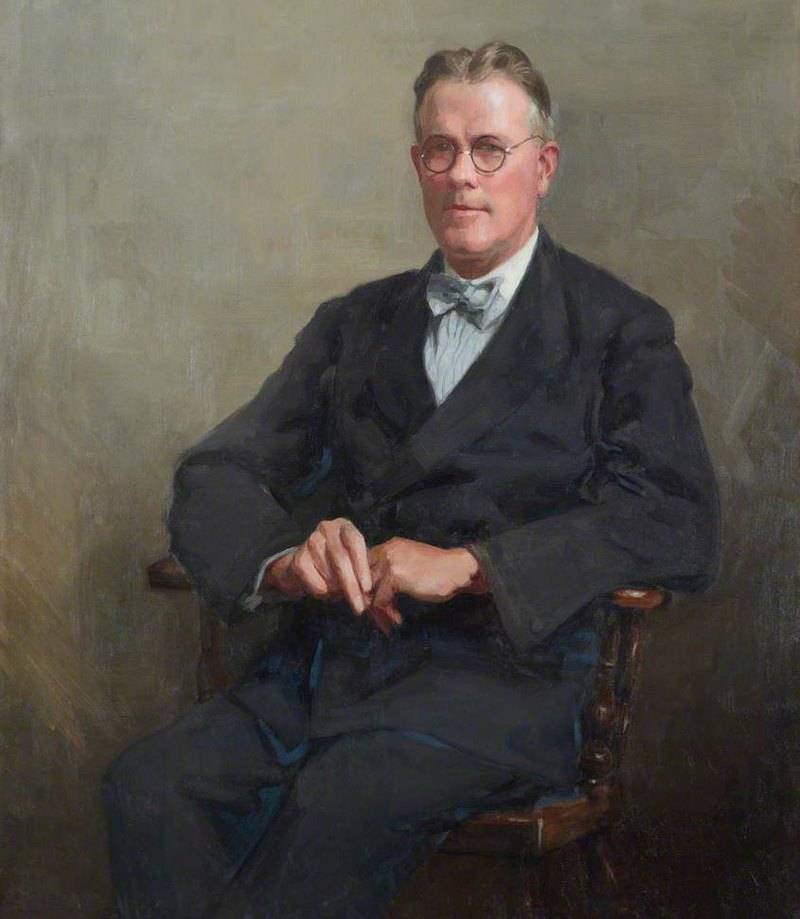
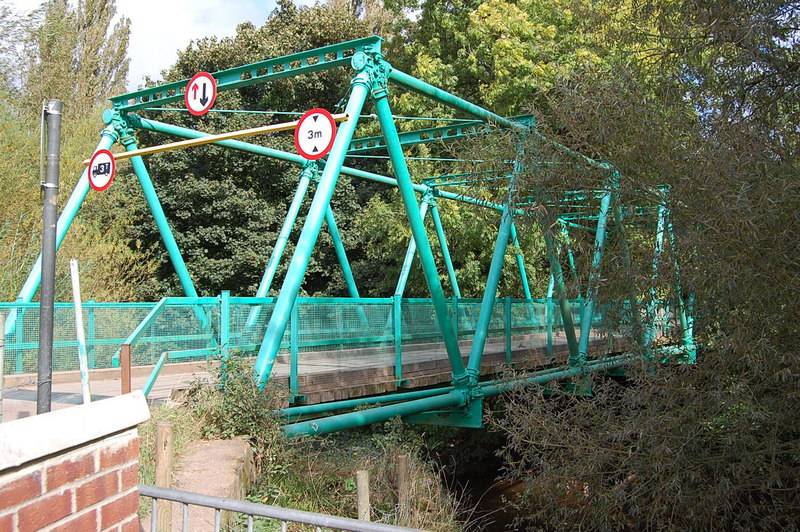
The Inglis Bridge was designed in such a way that all of its components could only be moved by personnel. In addition, it could be built with a small number of tools in a short amount of time - a squad of 40 sappers could build a 60-foot (18-meter) bridge in 12 hours.
The structure consisted of a series of 15-foot (4,6 m) Warren truss bays made of tubular steel sections.
During serial production, the design has undergone a number of modifications. Thus, tubes of variable length of the original design were replaced by tubes of the same length. Inglis received a US patent for his bridge on April 25, 1916, and for the type of joints used on it, on June 26, 1917.
In 1918, after visiting France, Inglis, along with Giffard Le Quin Martel, began experimenting with temporary bridges for tanks. Charles Inglis designed a tank carrying a 21-foot (6,4 m) bridge called the Lock Bridge. However, the first tank with an assault bridge appeared too late to get into the war.
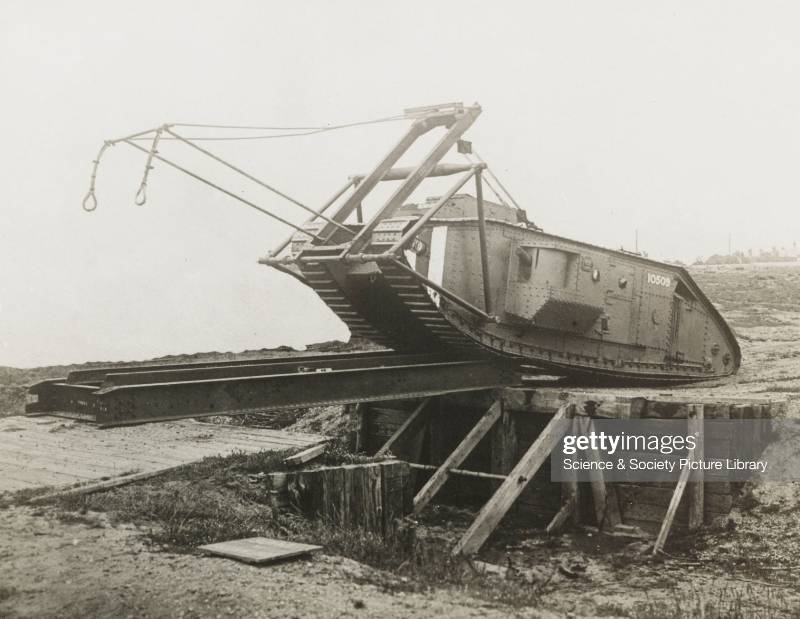
Despite promising early developments, the assault bridge never found widespread use. Fascines were more often used to overcome obstacles. It was this simple way of overcoming obstacles that was most in demand in the First World War.
Operation Silence
The first operation, which was supposed to use primitive assault bridges for the first time, was the landing of the 1st British Division on the Belgian coast, codenamed "Hush" ("Silence").
Although the operation was canceled, it provides an interesting example of the landing of armored vehicles and the need for special military equipment to overcome concrete obstacles. It is also a lesson that had to be learned again at Dieppe many years later.
So, Operation Silence was a British plan to land amphibious assault forces with tanks on the Belgian coast. The landing was to be supported by attacks from Newport and the Ysere bridgehead, positions that were a legacy of the Battle of Ysere in 1914. The operation was to begin in July-August 1917.
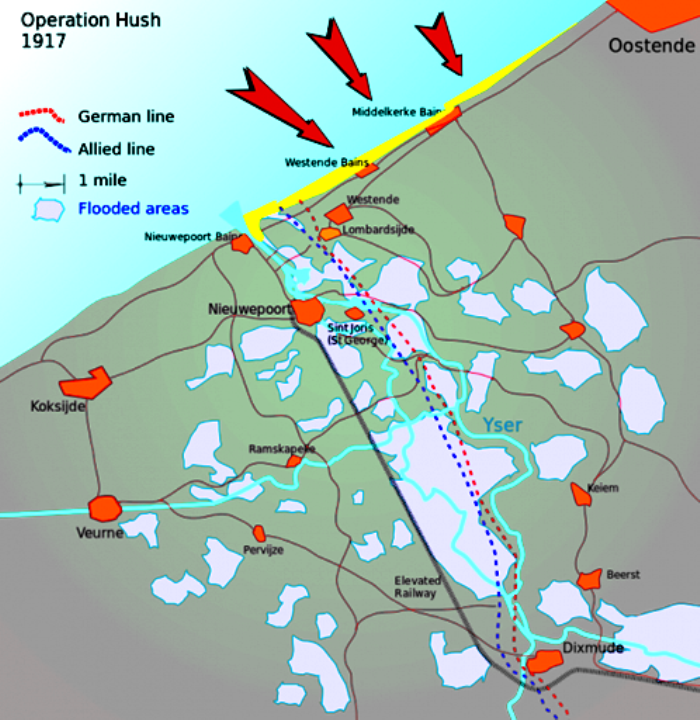
Ludwig von Schroeder, Commander of the Flandre Marine Corps
Admiral Sir Reginald Bacon R.N., Commander of the Dover Patrol
The Germans occupied most of the Belgian coast after the 1914 Race to the Sea. The Flandern naval corps was created by the German navy to defend the coast and form naval bases. Antwerp could not be used for German naval operations. But Ostend, Zeebrugge and Bruges were operated as bases for submarines and surface raiders. German submarines sank British ships with torpedo strikes and mines, and attacked British ports and important supply routes across the English Channel.
The German threat to British naval superiority led to several countermeasures.
Attempts were made to bombard German bases with monitors, but German coastal batteries, backed by Flandern Marine spotter aircraft, proved to be a tough nut to crack. Anti-submarine barriers, consisting of mines and nets, which were constantly patrolled at night, also had limited effect.
In early 1917, Admiral Sir Reginald Bacon proposed an amphibious assault on the Belgian coast, supported by a breakthrough from Newport and the Isère bridgehead.
Planning for the landing began almost immediately.
For its implementation, three huge pontoons, each 213 m long, were built to accommodate the landing, which included 13 men from the 750st Division, with supporting artillery, tanks, machine guns, cyclists and batteries of trench mortars. Each pontoon was pushed by two monitors, which were also tasked with attacking coastal positions during disembarkation. Aerial photographs and aircraft departures were used to map the profile of the beaches. This information was used to shape the hulls of the pontoons so that they could easily slide up the beach and get as close as possible to the naval defensive wall. The entire landing site was to be covered with smoke from eighty boats. Each boat had three burners and 1 kg of phosphorus.
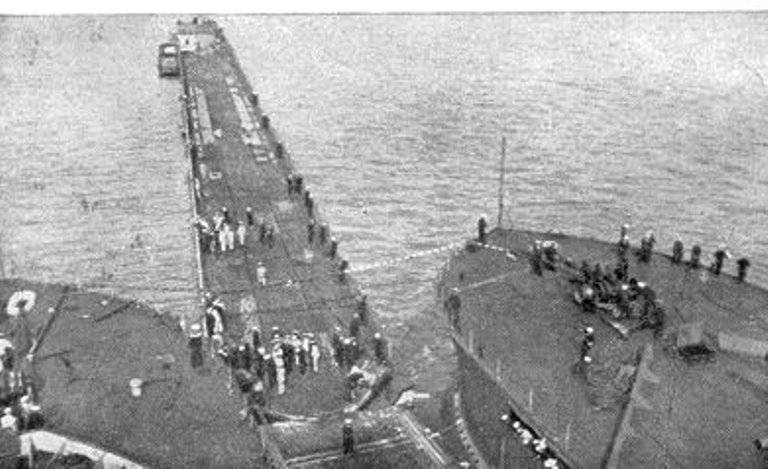
Preparations for the landing took place in the strictest secrecy.
Frank Mitchell, a tank driver who later won the first battle against German tanks in 1918, took part in this training. Here's what he recalled:
A similar concrete model was erected in the desert sand dunes of Merlimont, and a squad of tanks, manned by volunteers, set about the difficult task of breaking through the wall. The tanks were equipped with special track shoes. The engineers carried out many more experiments, and finally a new solution was found. Each tank was equipped with a large steel ramp ... When the tank reached the foot of the wall, the ramp was lowered using the tackle until the wheels touched the slope. Then the tank rolled him down the slope and, disconnected, was able to climb over the ramp.
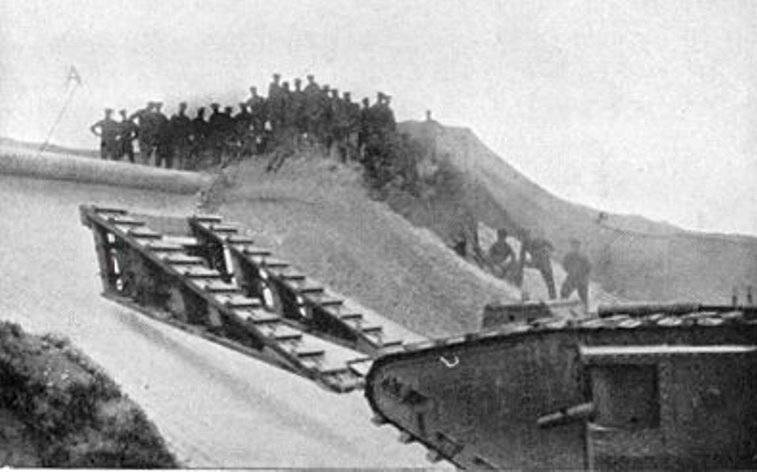
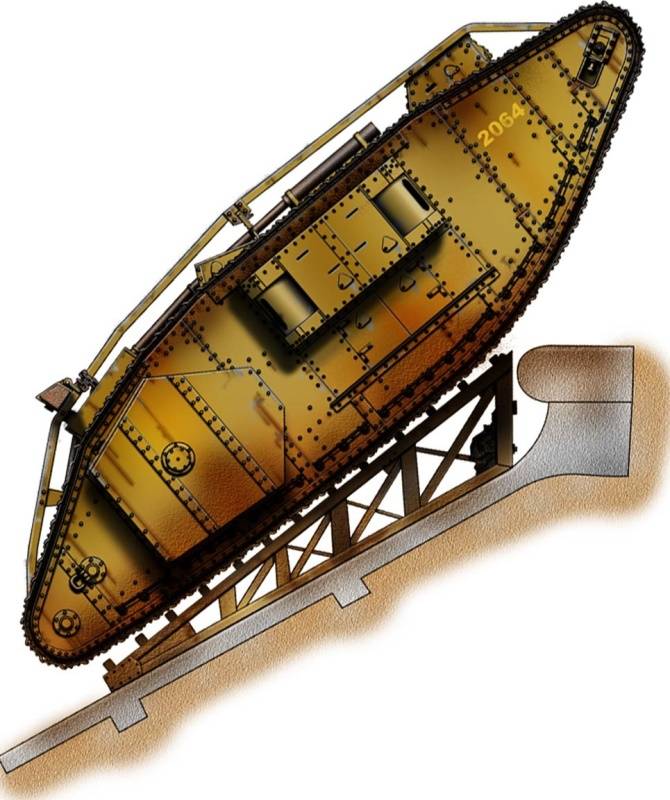
The plan for Operation Silence became an integral part of the thinking that eventually took the form of the Third Battle of Ypres.
The battle was launched on 31 July 1917 and was aimed at capturing and clearing the Belgian coast. It was planned that as soon as the forces broke through the German defenses at Ypres, the landing would begin.
The Germans, in turn, did not exclude the option of an amphibious assault, so they were well prepared for such actions. The Flandern Marine Corps originally consisted of two divisions, but on July 1, 1917, the third Marine Division was created. The corps also included a Sturmabteilung of well-trained attack aircraft.
24 coastal batteries were built, including eight large naval artillery batteries capable of striking ships at a distance of up to 30 km from the coast. A line of trenches and wire ran along the coast. Fire cover consisted of 33 large machine-gun nests, located every 1000 m. Mobile infantry and artillery reserves were part of the 4th Army. War games were held to simulate invasions, and the Germans were confident that they could hold back any attempted attack from the sea.
The British chose Middelkirke as their landing site. This area was the least protected and within easy reach of Newport.
Despite careful preparation, the amphibious assault never took place.
The anticipated benefits of the Third Battle of Ypres never materialized. Flandern Marine Corps detected the British seizure of the Ysere bridgehead and launched a preemptive attack (Operation Strandfest), depriving the British of their bridgehead to support the attack along the coast.
"Silence" was canceled without thundering.
Battle of Cambrai
Autumn 1917.
The newly formed tank corps in England began to look for the most convenient terrain for testing new vehicles with as few shells and dirt craters as possible. And such a locality was found.
Under Cambrai. The area of operation had firm, smooth soil, almost not distorted by craters. Therefore, the conditions for the movement of tanks were almost ideal.
This section was located south of the city of Cambrai between the Canals du Nord and de Saint-Quentin. After considering the comparative cost of using artillery fire to destroy barbed wire along the intended route of attack, it became clear that the tank represented a more economical alternative. The rate, however, remained skeptical, pointing out that in some places the trenches were up to 18 feet (5,5 m) wide, too large for a tank. The tankers offered a simple means to overcome such obstacles - a fascinator that would be dropped from the tank.
Fashina is a simple knitting of brushwood that looks like a cylinder. Used to create an easy passage through a ditch, trench, ditch, etc. It can also be used to protect river banks or other construction sites. Fashina was used practically from the first days of the war. Its greatest advantage was that the fascina could be built anywhere, this is a simple device. Several connected fascines dropped from a combat vehicle, in principle, could be considered an assault bridge.
But despite the enthusiasm of the Royal Panzer Corps, HQ remained skeptical and focused on planning the third Battle of Ypres, in which tanks were constantly "lost on the wrong ground." By mid-September, it became clear that the Third Battle of Ypres had failed. Soon, albeit with great reluctance, the plan of the Royal Panzer Corps was approved.
Before the battle, 400 fascines were made, 3,35 m in diameter and 3 m long. The Central Workshop of the Tank Corps was responsible for construction work, and most of the work was carried out by the 51st Chinese Labor Company, which was attached to the workshop. The wood for the fascines was brought from the Crécy forest, and special methods were used to compress it with wire: two tanks were moving in opposite directions!
Of the 476 tanks planned for the offensive, only 18 were specially modified to carry bundles of fascines.
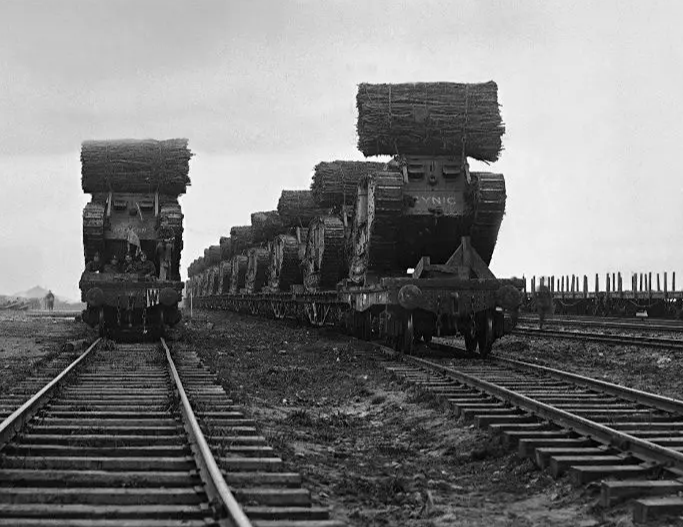
Keeping in mind the old adage that it is hard to learn, easy to fight, tankers stubbornly practiced launching fascines using techniques invented by none other than Colonel Fuller himself. The tanks worked in groups of three. At the same time, the lead tank was responsible for the destruction of wire obstacles, for which it was equipped with a special hook. Having removed the obstacle, he stepped aside and provided fire cover for the next two vehicles, which were supposed to carry the fascines. They were thrown into the abyss, and the first tank passed on. It was an effective training session, and its elegant simplicity brought much of the morale back to the tankers who had suffered in the mud of Ypres.
The attack began on November 20 and was successful.
After the tanks with surprising ease passed through the "insurmountable" Hindenburg Line, the enemy was confused and began to retreat. After the inconclusive results of the use of tanks on the river. Somme, at the Battle of Paschendale and by the French in a number of places, it was a success.
British tanks advanced confidently until they reached the Canal de Saint-Quentin. Taking the Flequière ridge, which was on the left flank of the attack, the armored monsters began to move towards the Burlon forest. Only a few kilometers remained from the forest to Cambrai, but further advance was stopped by the fire of the surviving German batteries.
And here unforeseen difficulties began.
Thus, several tanks reached the canal two or three hours earlier than the infantry. And they could have crossed it, because the Germans here actually did not provide any resistance. But the enemy managed to blow up the bridge over the canal, and he collapsed as soon as the first tank drove onto him.
But even after that, the tanks could force the obstacle, if at least someone had guessed to supply them not only with fascines, but also with assault bridges.
But nobody thought of that.
According to the plan, the cavalry was supposed to build on the success in the direction of Cambrai. However, when she arrived, German opposition on the opposite bank of the canal became too strong. Therefore, only a squadron of Canadian cavalry and a few infantry companies crossed the canal.
On this the offensive ended: the troops were tired and did not have the strength to go further.
Ultimately, the Battle of Cambrai ended in vain. But despite this, she showed that using fascines to support a tank attack was not enough. It is necessary to use a more powerful means for overcoming obstacles on the battlefield by tanks so that the tanks do not stop for a long time.
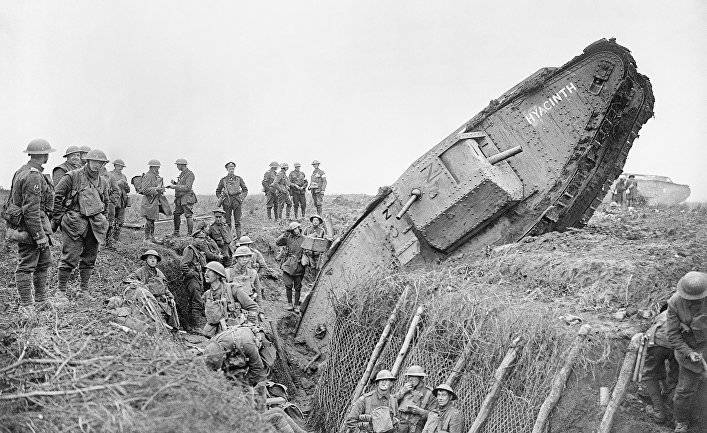
Between two wars
Work on the armored bridgelayers continued after the Great War, with the result that a "permanent home" for military equipment and bridges was created in the Christchurch barracks in Dorset.
Three Royal Engineer Armored Bridge Battalions were formed shortly before the end of the war, but with the end of the war they were disbanded. The last of the three was formed in 1919 as the Experimental Bridge Company (EMU) of the Royal Engineers. Ultimately, EBC was transformed into a predominantly civilian experimental bridge battalion.
At the same time, tests of the modified Heavy Tank Mark V ** with a 21-foot Inglis bridge, capable of withstanding a load of 35 tons, continued.
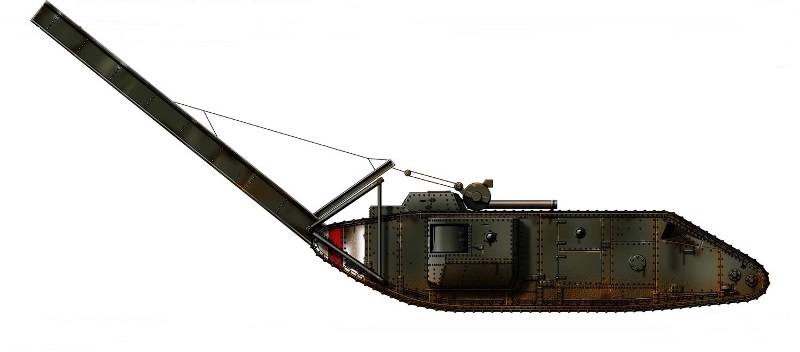
But when the tanks, embodied in designs such as the Vickers Medium Mark I, turned out to be much lighter, it became obvious that it was no longer possible to move the tank bridges on the front of the tank due to the heavy weight: the bridge would turn the tank forward.
The bridges had to be moved to the roof of the tanks and launched from a static position. Thus, the Bateman Assault Bridge was designed and tested - the first tank bridge to carry a bridge on the roof. The bridge was pulled forward by a winch and lowered horizontally.
Despite the fact that this concept has been tested, it has not received further development due to lack of funds, as a result of the Great Depression that swept the world.
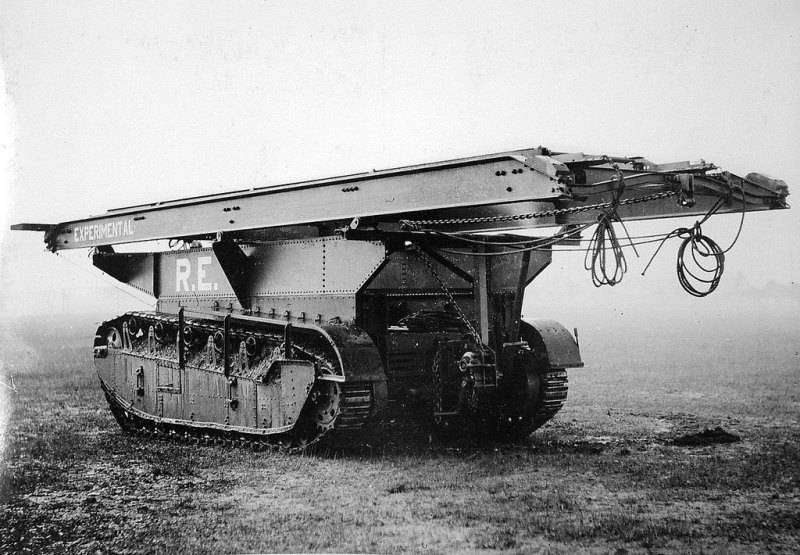
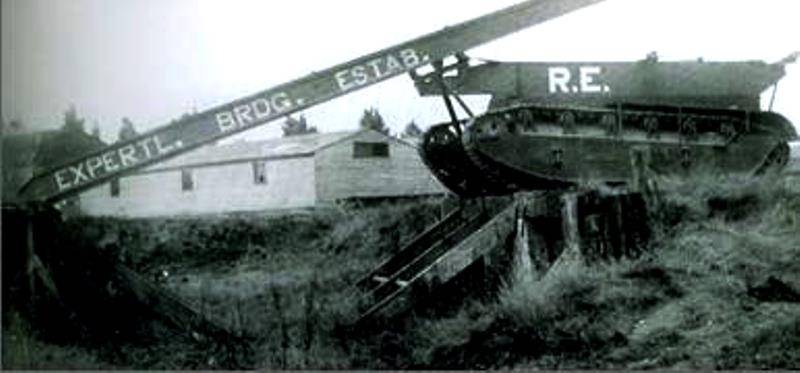
A more exotic version of the bridge turned out to be the Stepping Stone Bridge. In fact, it was not a bridge, but a series of fortified wooden flyovers that were put in place and secured with rope and pickets. Again, this has proven to be effective, but unfortunately not further developed.
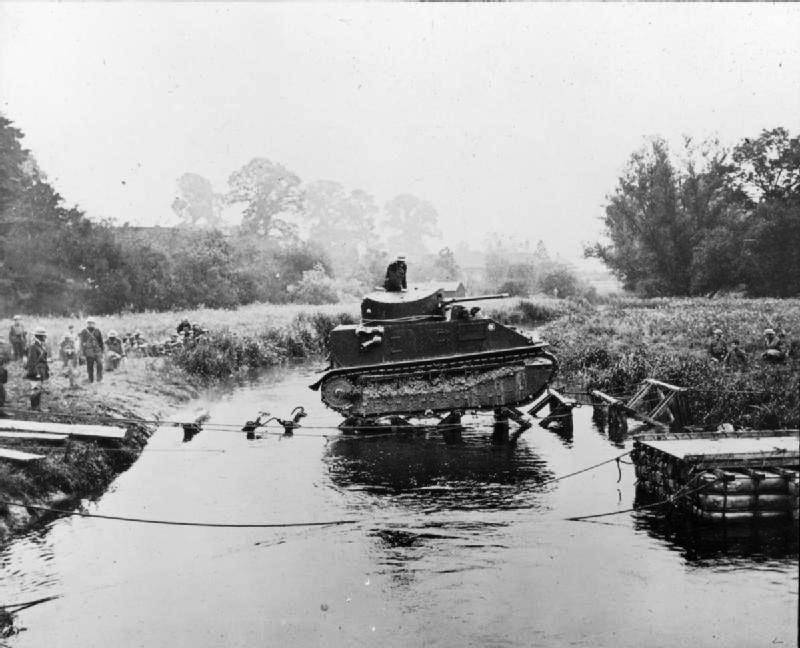
In 1926, an attempt was made to create a "bridge carrier".
For this, brackets were installed on both sides outside the hull of the Vickers Medium medium tank. They contained the components to create a short bridge. Upon arriving at an obstacle, the crew must dismount and reassemble the bridge before throwing it over the obstacle. Unsurprisingly, this was completely useless, as the crew would be exposed to enemy fire all the time. Therefore, further work on the "bridge carrier" was stopped.
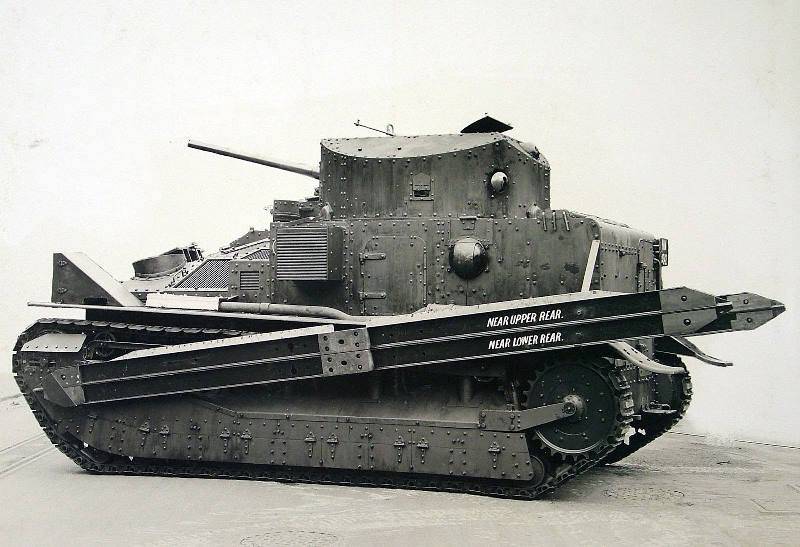
In the late 1920s, the Wild Assault Bridge was designed by Messrs MB Wild and Co Limited from Birmingham. It was many years ahead of its time with a two-piece bridge design that ran horizontally and locked in place with a complex system of steel cables and winches. Although not adopted for service, this system was subsequently developed by the Germans on their Leopard Biber tank in the seventies.
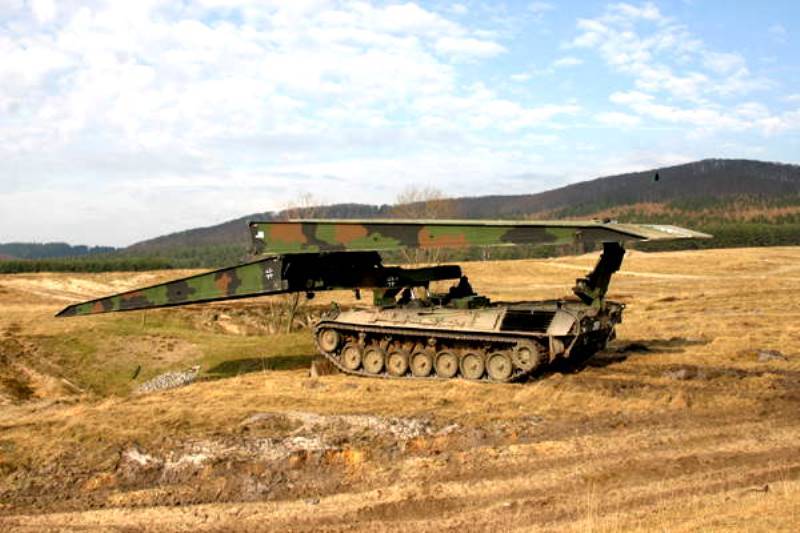
The scissor bridge was first proposed by Captain S. Galpin in 1935, but implemented only in 1938 by Captain S. Stewart and Mr. D. Delaney in the Experimental Bridge Construction. The first prototype used the Mark V light tank with the turret removed.
The two halves of the bridge were pivotally connected to each other and represented a pair of roadways designed for tanks and wheeled vehicles of the time. The free span between the tracks allowed the bridge's weight to be kept to a minimum. 30 feet long (9,1 m), it could travel spans up to 26 feet (7,92 m) and carry loads of up to 7 tons.
It was kept folded on the roof of the tank, it was unfolded and launched using a support frame that lowered to the ground - this stopped further rotation. At this point, the folded bridge was vertically in front of the tank. Then the cables were pulled, which acted on the cam, the bridge was unfolded and lowered. After that, the mechanism was turned off, and the tank went into cover.
This system was later used on the Covenanter and Valentine tanks.
Продолжение следует ...
Information